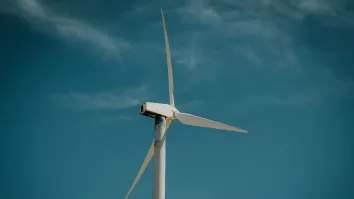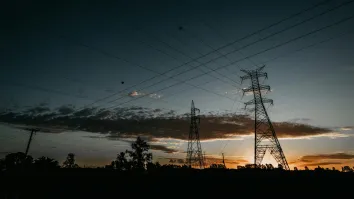
Onshore wind remains cheapest energy source in 2024
The addition of over 500 GW of RE prevented the use of fossil fuels worth $57b.
Onshore wind remained the most affordable source of renewable energy at $0.034 per kilowatt-hour (kWh) in 2024, according to the International Renewable Energy Agency (IRENA).
In its “Renewable Power Generation Costs in 2024” report, IRENA said that onshore wind projects were 53% cheaper compared to the lowest-cost fossil fuel alternatives.
Solar energy, meanwhile, was priced at $0.043/kWh and was 41% more affordable than fossil fuel alternatives.
“The addition of 582 gigawatts of renewable capacity in 2024 led to significant cost savings, avoiding fossil fuel use valued at about $57b,” IRENA said, noting that 91% of new renewable power projects commissioned last year were more cost-effective than any new fossil fuel alternatives.
Cost reductions are expected to continue as the technologies mature. However, challenges, such as trade tariffs, raw material bottlenecks, and evolving manufacturing dynamics, particularly in China, pose risks that could temporarily raise costs.
Higher costs are likely to persist in Europe and North America, driven by structural challenges such as permitting delays, limited grid capacity, and higher balance-of-system expenses. In contrast, Asia, Africa, and South America, with stronger learning rates and high renewable potential, could see pronounced cost declines.
The report also noted that “stable and predictable revenue frameworks are essential to reduce investment risk and attract capital.”
“Integration costs are emerging as a new constraint on deployment of renewables. Increasingly, wind and solar projects are delayed due to grid connection bottlenecks, slow permitting and costly local supply chains,” IRENA added.
Financing costs also remain a decisive factor in determining project viability. In many developing countries of the Global South, high capital costs, influenced by macroeconomic conditions and perceived investment risks, significantly inflate the levelized cost of electricity (LCOE) of renewables, the agency said.
Meanwhile, technological advances beyond generation are also improving the economics of renewables. The cost of battery energy storage systems (BESS) has declined by 93% since 2010, reaching $192/kWh for utility-scale systems in 2024, thanks to manufacturing scale-up, improved materials and optimised production techniques.
“Artificial intelligence (AI)-enabled digital tools are enhancing asset performance and grid responsiveness. However, digital infrastructure, flexibility, and grid expansion and modernisation remain pressing challenges, including in emerging markets, where the full potential of renewables cannot be realised without further investment,” IRENA said.

















 Advertise
Advertise








